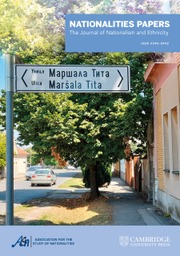Article contents
Representation of minorities: perspectives and challenges
Published online by Cambridge University Press: 20 November 2018
Extract
Recent years have brought a remarkable shift in the theory of political representation. Our understanding of representation has moved beyond the traditional static and unidirectional approach, which envisions representatives as simply responding (more or less successfully) to their constituents' needs and demands. We now know that representation is a dynamic and multidirectional process in which the representatives' claims at least partially construct the constituents' interests (Saward 2010). Thus, constructivist scholars have convinced us that representation is not merely about responding to the preexisting and static interests of constituents; rather, it is a dynamic process in which representatives also construct their constituencies' interests, views, and perceptions through the claims-making process. This theoretical shift is most often advanced in discussions of women's representation (Campbell, Childs, and Lovenduski 2010; Celis et al. 2014), but it is bound to have a strong impact also on the study of ethnic minority representation in contemporary democracies. Indeed, if representation is a two-way process through which politically relevant constituencies are constructed, this should apply to ethnocultural minorities, whose “groupness” (Brubaker 2004) cannot be taken as fixed and prepolitical.
- Type
- Special Section: Representation of minorities: perspectives and challenges Guest Editors: Licia Cianetti and Jelena Lončar
- Information
- Copyright
- Copyright © 2018 Association for the Study of Nationalities
References
- 2
- Cited by




